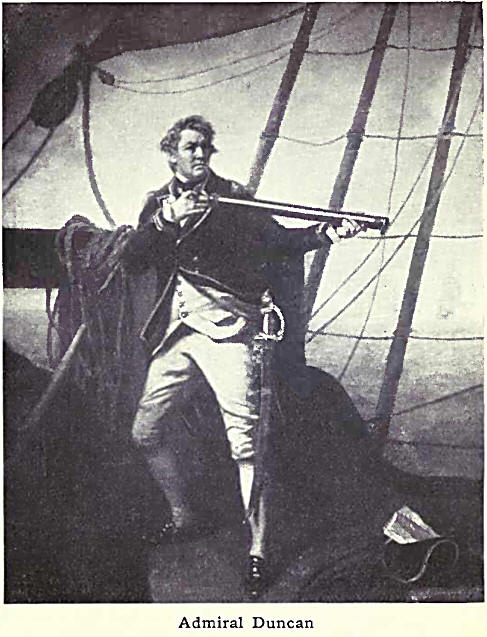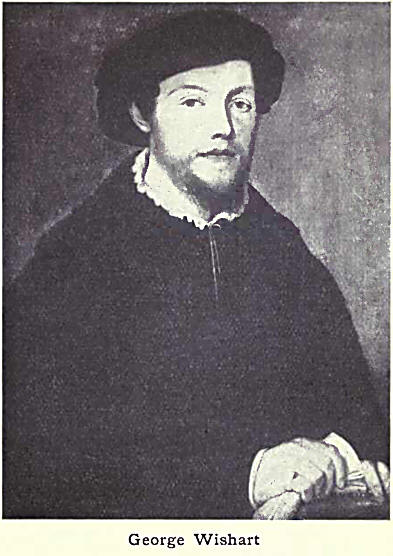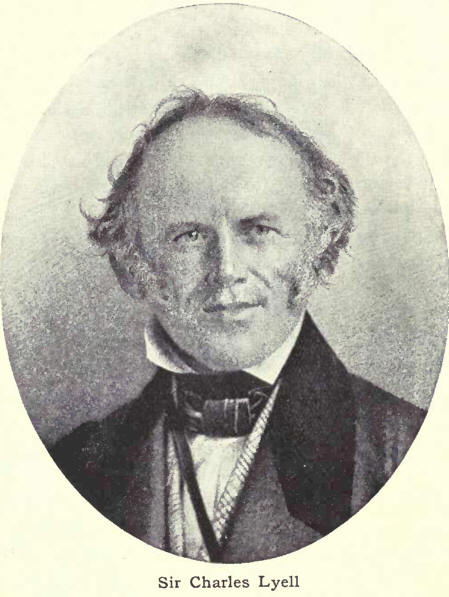|
In the state and the
church, in the army and the navy, in letters and law and science,
and in the struggles for religious and political liberty, there is
many a noted name associated with our county.
The name of
Scrymseour or Scrimgeour, “skirmisher or hardy fighter,” was
bestowed by Alexander on Sir Alexander Carron, for bravery in
assisting to put down a rebellion, and in particular for carrying
the royal standard across the Spey. The honour of being
standard-bearer was made hereditary in his family and attaches to
his lineal representative of to-day. One descendant of Scrimgeour
was made constable of Dundee by William Wallace. Another bore the
royal standard at Harlaw and fell in the battle. Sir Alan Durward
(i.e. door-ward), whose castle was situated near the Loch of
Lintrathen, held high office under Alexander II, married one of the
king’s daughters, was one of the regents during the minority of
Alexander III, and in 1264 was one of the leading generals at Largs.
In the thirteenth century the Montealts or Mowats, who had property
near Fern, were an important Forfarshire family. One of them went to
Norway as a witness of the marriage of Princess Margaret to King
Eric.
Another family of
historical interest is that of the Bethunes, Betons, or Beatons,
whose descent has been traced to the time of William the Lion. James
Beaton, Abbot of Arbroath and subsequently Archbishop of St Andrews,
was succeeded in both offices by Cardinal David Beaton. The latter
owned various lands in Forfarshire, and built Melgund Castle.
James Hallyburton of
Pitcur Castle was Provost of Dundee in the time of Mary of Guise. He
was a Protestant leader and protected Paul Methven (a noted
reforming preacher of Dundee) against the royal mandates. When Mary
was being besieged in Leith, Hallyburton led a contingent from his
town, and was killed in a sortie from Leith. His son, provost of
Dundee for thirty-three years, held many high offices during the
reign of Mary, and was one of the committee who brought about her
demission of the crown.
Sir Thomas Lyon, the
Master of Glamis, was conspicuous in the Raid of Ruthven. It was he
who exclaimed, “Better bairns greet than bearded men!” and at his
death James is said to have remarked that the boldest and hardiest
man in his kingdom was dead.

The “Great” Marquis
of Montrose is one of the most noted of the sons of Forfarshire. At
first a Covenanter, he went over to the king’s side in 1642, and for
some time was the terror alike of his native shire and of the whole
country. His brilliant career and its sad termination have been the
theme of many a writer.
Few men have been
more eulogized by friends and defamed by foes than John Graham of
Claverhouse, created Viscount Dundee by James VII. In Scott’s Old
Mortality he is depicted as a stern yet chivalrous soldier. Another
native of Forfarshire shared with Claverhouse the epithet of
“bloody”—Sir George Mackenzie. Born in Dundee (1636), he was
educated at St Andrews and Bourges. Becoming King’s Advocate, he
earned the undying hatred of the Covenanters for his stern severity
as prosecutor. But he was a lover of literature, and his best title
to fame is the foundation of the Advocates’ Library in Edinburgh.
Admiral Duncan was
raised to the peerage as Viscount Duncan for his naval exploits, and
especially for his victory at Camperdown. “The rapidity of his
decision, the justice of his glance, were equal to those of Nelson
himself.”
Sir William Chalmers
served with distinction under Wellington in the Peninsula and at
Waterloo, and was knighted for his services.

From 1762 to 1790 the
Forfar and Fife District of Burghs was represented in Parliament by
George Dempster of Dunnichen. He was nicknamed “Honest George”
because of the deep interest he took in the welfare of his native
county. Equally distinguished in the beginning of the nineteenth
century was George Kinloch. He presided over a monster meeting in
Dundee to protest against the “Peterloo massacre” and so roused the
ire of the authorities that he was outlawed and was in exile for
three years. Pardoned by George IV, at the personal request of his
daughter, Kinloch returned to his native town of Dundee, and sat as
its first representative in the Reformed Parliament. William, Lord
Panmure, is known as “the father of reform in Scotland,” and still
more widely famous was his son, Fox Maule, Secretary of War. Of
another statesman, Joseph Hume, Montrose, his native town, is justly
proud. In India he acquired so profound a knowledge of Indian
languages that he was appointed Government Interpreter and
Commissary-General. On his return home he became a great radical
reformer in Parliament and won for himself the esteem and confidence
of the whole nation.
One of the
outstanding figures in the Reformation struggle was George Wishart,
a native of Forfarshire. Teacher of Greek and preacher of the
reformed doctrines, he became a marked man and was burned in St
Andrews in 1546. Another Forfarshire martyr, Walter Mill, long
parish minister of Lunan, was burned in St Andrews at the age of
eighty-two. In later times the Rev. James Guthrie, son of the Laird
of Guthrie, was executed for having promoted the Western
Remonstrance, and for having denied the authority of the king in
ecclesiastical matters. Dr Alexander Leighton, Usan, was one of
Laud’s victims, being mutilated in 1630 by order of the Star Chamber
for a virulent libel against the bishops. His son, Robert Leighton,
Bishop of Dunblane and afterwards Archbishop of Glasgow, proved
himself a most amiable and broad-minded churchman.
The great names of
Andrew Melville, James Melville his nephew, and Erskine of Dun, all
closely connected with Montrose, take us back to the sixteenth
century. With the exception of Knox, no preacher had more influence
in ecclesiastical affairs than Andrew Melville. Melville was
renowned as a scholar. He was Professor of Latin in Geneva, and, on
returning to Scotland, became Principal of Glasgow University and
then of St Mary’s College, St Andrews, where at the same time his
nephew was Professor of Oriental Languages. Andrew was for four
years imprisoned in the Tower of London, and died in exile at Sedan
in 1622. John Erskine of Dun, a member of a well-known family,
returned from the Continent imbued with reformation principles, yet
so highly respected by all that he frequently played the role of
mediator between Catholics and Protestants. It was he who brought to
Montrose Marsilliers, the first teacher of Greek in Scotland. After
the Reformation :n 1560, he was appointed Superintendent of Angus
and Mearns. Without sacrifice of his integrity, he managed to retain
the confidence of the Reformers and the favour of James VI.
Thomas Erskine of
Linlathen, near Dundee, advocate and theologian, a friend of
Carlyle, Dean Stanley, and F. D. Maurice, was an accomplished
scholar, but was still more potent in stimulating the religious life
of his times. Dr Thomas Guthrie, a native of Brechin, had his first
ministerial charge in Arbirlot, though it was in Edinburgh that he
won his fame. He was one of the Disruption leaders; and his deep
interest in the poor manifested itself in the founding of the
Edinburgh Original Ragged School.
Hector Boece may head
the list of scholars and men of letters. Born in Dundee in 1465, he
was appointed first Principal of the University of Aberdeen. His
Latin History of Scotland is picturesque but largely legendary.
James, John, and Robert Wedderburn, sons of a Dundee merchant,
disciples of Wishart, and students of St Andrews, were contributors
to the Gude and Godly Ballates, sometimes known as the Dundee
Psalms. Sir Peter "Young of Seaton, a contemporary of the
Wedderburns, and like them the son of a Dundee burgess, was tutor,
under Buchanan, to James VI, who knighted him for his services.
Amongst the many sons
of Angus who have written of their native county are John Ochterlony
or Auchterlony, who penned an interesting and trustworthy local
history about 1682; James Thomson, “father of our local
archaeological literature,” the author of a number of valuable
historical works on the county; and Alexander J. Warden, whose five
monumental volumes are the result of years of patient research.
The Bards of Angus
and Mearns proves this part of Scotland to be a nest of singing
birds. One of these, Alexander Ross, schoolmaster of Lochlee, but a
native of Aberdeenshire, honoured alike as a teacher and a poet,
wrote Helenore, or The Fortunate Shepherdess, and other poems in the
Scottish dialect. Amongst his popular songs are “The rock and the
wee pickle tow,” “To the beggin’ we will go,” and “Woo’d and married
and a’.” He died in 1784. Other two poets, natives of Dundee, are
Robert Nicoll, “a second Burns,” and William Thom, author of “The
Mitherless Bairn.”
Dr Thomas Dick, a
native of Dundee, did much to popularise science, especially
astronomy, by his books and his lectures. He died at Broughty Ferry
in 1857.
James Tytler, son of
a minister of Fern, wrote songs in his native Doric, and became
first editor of the Encyclopaedia Britannica. One of his
contributors, the son of a crofter at Logie-Pert, near Montrose, was
James Mill, the historian of British India (i806-1818) and father of
John Stuart Mill. Patrick Chalmers, M.P., of Aldbar, was noted alike
for his philanthropy and his wide antiquarian researches. His
Sculptured Stones of Angus is a work of much value. Dr John
Jamieson, author of An Etymological Dictionary of the Scottish
Language, though not a native of the county, was long closely
associated with it.
In science some
natives of Forfarshire have gained not a little distinction. Dr
Patrick Blair, born in Dundee, who was imprisoned after 1715 as a
Jacobite, was a noted physician and botanist. Colonel William
Patterson, son of a gardener in the parish of Kinnettles, made
valuable contributions to the science of natural history. Towards
the close of the eighteenth century he travelled in Africa, and from
the Cape penetrated farther into the heart of the continent than any
other European had then done. For many years he was
Lieutenant-Governor of New South Wales. William Gardiner, also of
humble birth, rose to fame as a botanist, and published a number of
works, amongst which was The Flora of Forfarshire. Sir Charles
Lyell, the eminent geologist, whose works revolutionised his
science, was born in 1797 at Kinnordy, near Kirriemuir. In 1859
James Bowman Lindsay, a native of Carmyllie, held wireless
communication across the Tay at Glencarse, where the river is half a
mile wide. It was he also who originated the idea of a submarine
cable to America. Lord Brougham said of another Dundonian, Sir James
Ivory, that he was the greatest mathematician since Sir Isaac
Newton.

From the crowd of
names connected with improvements in spinning and weaving
appliances, it can scarcely be regarded as invidious to select that
of the late James Carmichael of engineering fame. |

